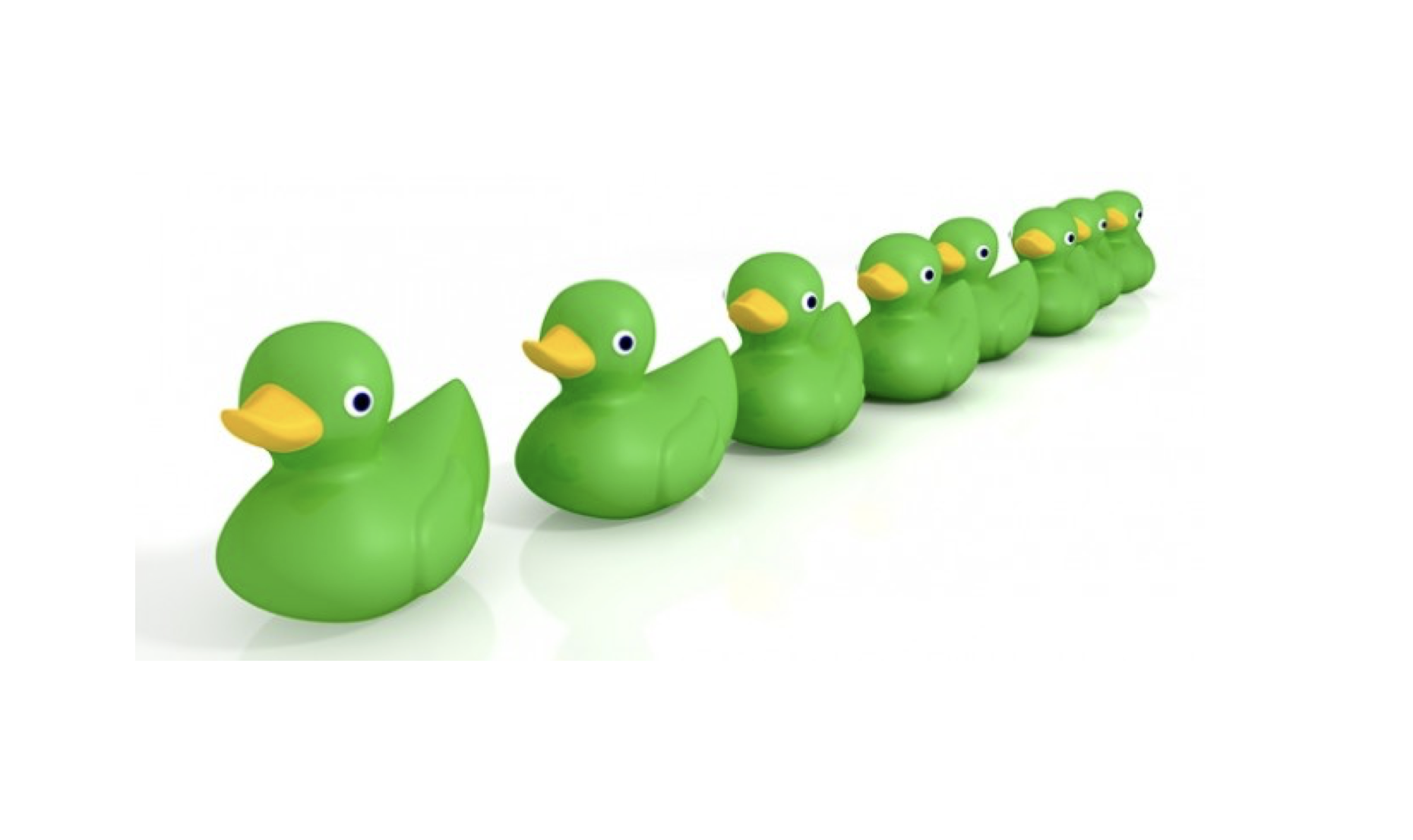4.2 Get your ducks in a row & start
The 4th step of the narrative change planning process – Run the campaign - consists of four elements and on this page, we focus on the second: Get your ducks in a row & start.
-
Sequence the campaign phases
-
Get your ducks in a row & start
-
Monitor as you go
-
Prepare to defend your position
The phrase ‘get your ducks in a row’ is an idiom that simply means to get everything ready and organised and in this case, signifies that element is the last before the actual campaign launch.

Figure 1: Ducks in a row – organised and ready to go!
There are a wide range of things to get in place and finalise before actually launching and this page, especially the planning checklist supports you in that process.
Make sure all elements are finished and prepared to the highest quality before launching your first wave.
Narrative change campaigns that reach out to the broader public are normally conducted in teams and draw on the skills of all kinds of people, including photographers, video makers, media and communication specialists. This means that there are multiple parallel processes undertaken and products that need to finished, reviewed and sharpened for release. People have to be booked, events organised, press releases drafted and redrafted, and so on. Given this complicated and challenging workload, a dedicated campaign manager is often engaged to take on this oversight and coordination role. Depending on the scale of the campaign and number of partners involved in implementation, this may even require a broader campaign management and coordination team.
Drawing on our experience of working with campaign teams, we have put together the following checklist to guide this finishing up process. Of course, you will need to adapt it to your purpose and campaign specifics.
- Have you completed your texts for the campaign?
◦ Articles and editorials
◦ Policy briefs or position papers
◦ Letters or petitions
◦ Flyers, handouts, leaflets, stickers and other merchandise
-
Is the printing/copying of printed material already completed, delivered and in hand?
-
Is the schedule fixed for the specific release dates for each element?
Visuals
-
Have you completed your visuals to the quality level you need?
◦ Videos
-
Are all visual elements uploaded and ready to share on social media?
-
Is the schedule fixed for the specific release dates for each element?
Broader campaign team preparation
-
Have you completed your campaign team preparation?
◦ Team familiar with the schedule for each wave
◦ Team very familiar with the talking points to stay on message and know what to avoid
◦ Team ready to take an engaging approach in the challenging exchanges expected
Campaign team ready for 1st wave
-
Are those in various roles in the team ready for the first campaign wave?
◦ Campaigners at other levels (e.g. for events or street campaigns)
◦ Other messengers or supporters
◦ Team members that are supporting the spokespeople
◦ Campaign management and coordination
Campaign team ready for responses
-
Is the team ready for the predictable challenges of different kinds?
-
Is there a process in place for dealing with the unexpected challenges?